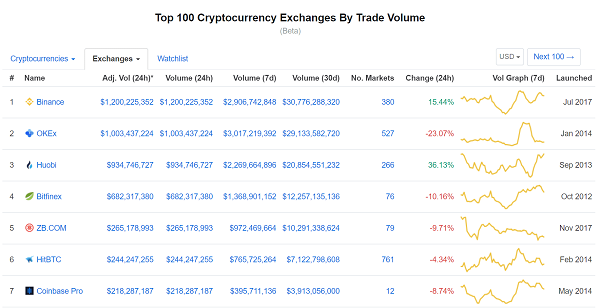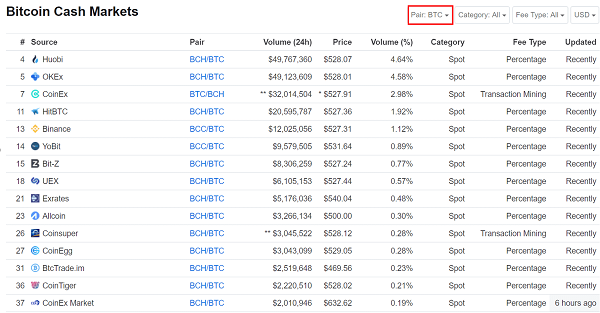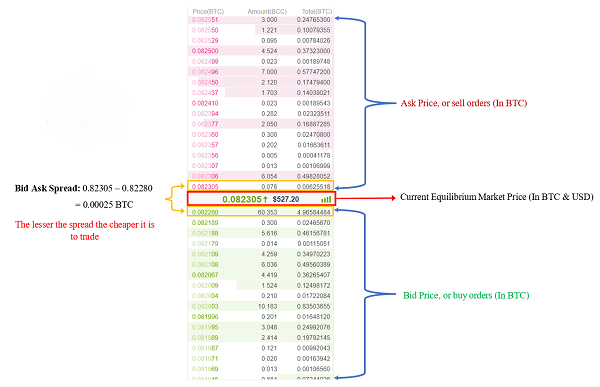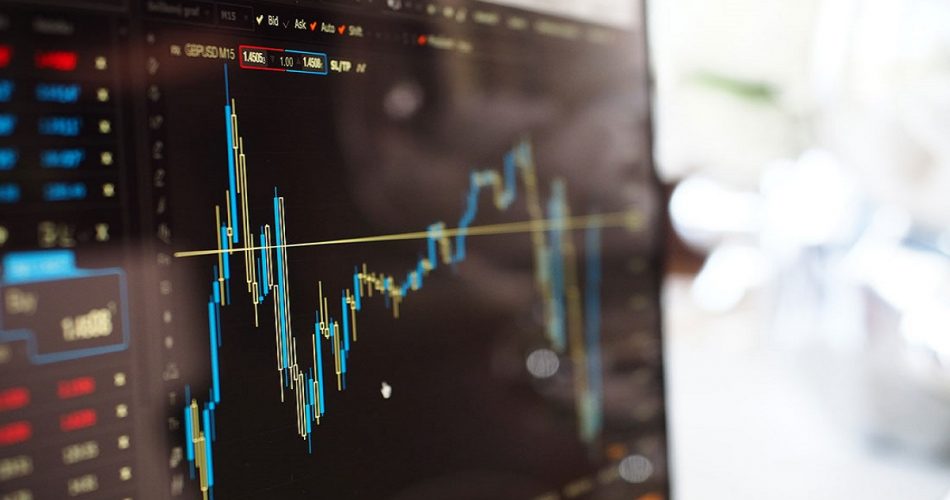What Is The Meaning Of Liquidation And How Should We Use It?
In the growing market for cryptocurrencies, liquidation is a concept that every trader or investor should be familiar with before making a decision.
Understanding liquidation allows you to identify the downside when buying and selling a cryptocurrency.
This way, you can be sure that you will not suffer too much damage.
In this Kevin Nick article , we are going to look at the different metrics we need when measuring liquidity. We will also review the methods of effective use of this concept in trading.
It is best to provide a clear definition of liquidation at the outset: Liquidation refers to the degree to which an asset can be quickly bought or sold without affecting its overall price stability.
Liquidation in the world of digital currencies
In the field of digital currencies, liquidation can be equated with the ability of a digital coin to convert into cash or other digital coins without upsetting its price equilibrium. The higher the level of this ability, the better. Because it means that this coin has a lively and at the same time stable market. In such a market, traders can easily and quickly trade at a fair price.
For example, suppose you are going to buy a new product from the local market. Surely your desire is to do this in a market with a large number of sellers and buyers, instead of going to a market with a small number of sellers and customers.
Daily trading volume is one of the indicators of liquidity measurement. In the image below, you can see the daily trading volume of digital currencies compared to traditional markets:
Comparison of digital currency trading volume with traditional markets
As you can see, the trading volume of the digital currency market is lower than other markets. This is due to the nascent nature of these currencies as well as their technology. That is why this market is considered to be very low in terms of liquidity. Because it is not yet ready to attract very large orders that could change the value of the coins.
Non-liquid markets are highly volatile. Because in it, anyone can distort or manipulate the price of cryptocurrencies by customizing in large volumes.
How can liquefaction be measured?
The two most common ways to do this is to measure the volume and gap of the bid-ask price. In the following, we will examine each of these methods:
Volume
Volume refers to the number of coins traded in a given market over a period of time. The volume of trades in a market can determine its general direction and direction. The higher the trading volume of a market, the greater the trading activity (ie buying and selling) in it. This will eventually lead to the liquidation of this market.
Also, if the desired volume is higher than the market trend (whether in the negative wave or in the positive wave of prices), it indicates high market activity that can support the overall trend. Ultimately, all of this potentially leads to greater market stability in a given direction.
For example, a significant reduction in the trading volume of a digital currency may mean that we will soon see a long bearish trend in it.
If price changes are not supported by the overall trading volume of the market, it indicates that a small number of traders are supporting the currency at this price. So the exchange rate will probably not be stable in this period.
In fact, raising prices without significant trading volume is a sign that prices are being manipulated by a limited number of people for specific purposes behind the scenes.
Keep in mind that the enamel for calculating trading volume is often the US dollar. For example, if the daily trading volume of the Bitcoin market is $ 300 million, it means that the total volume of bitcoins traded in the last 24 hours has been $ 300 million. But the calculated volume can be divided into 3 general groups.
The total trading volume of a digital coin
Here only the total volume of trades made with a coin is calculated. This method is used to measure the liquidity of a specific digital coin market.
The higher the trading volume of this coin, the more liquid it is. Such a coin is very good for trading. Because it is easier to enter or exit it. You can use the data of the last 24 hours of trading on the CoinMarketCap site as the basis for your calculation.
An example of this method
In the image below, you can see a comparison of the trading volume of 2 ether coins (ETH) and EOS:

The column marked in red indicates the desired volume for each of these coins. As it turns out, Ether’s daily trading volume was $ 1.8 billion. This is only $ 697 million for the EOD. Therefore, the degree of liquidity of the ether currency market is much higher compared to EOS currency .
So if you want to choose one of these two currencies for trading, ether will be a better option because of its more active market. Because you can buy or sell it faster and easier.
Now let’s compare Ether cryptocurrencies with another cryptocurrency called TRC:
 How to detect non-liquid currencies
How to detect non-liquid currencies
As you can see, the daily trading volume of Traquin is only $ 2761. Therefore, this currency code should be considered as having a non-liquid market. Because it lacks the necessary activity in its market. For this reason, if the purchase is made by selling on TRC, it can greatly affect its price.
So the possibility of sabotage or price manipulation in these ciphers is very high. So the wise thing to do is never to trade in non-liquid coins; Unless we have a valid guarantee for its price stability.
The total volume of exchanges of an exchange
In this method, we calculate the total trading volume of all coins in an exchange. In fact, our goal here is to measure the liquidity of an exchange. The higher the level of liquidation, the better the conditions for trading in that exchange. Because more people are trading and exchanging money in it.
In addition, this index is used as a criterion for measuring exchange. All exchanges are classified based on their trading volume. So the larger the exchange volume of an exchange, the larger and more secure the exchange is. You can also get help from CoinMarketCap to use this method.
An example of this method
In the image below, you can see an example of the output of this site:
 How to analyze the total volume of exchanges
How to analyze the total volume of exchanges
Your goal should be to identify exchanges that have a higher degree of liquidity. It should be noted that liquidation in this method does not correlate with the number of coins exchanged. Therefore, having more coins traded in one exchange does not necessarily mean that it is more liquid than other existing exchanges.
For example, looking at the table above, you can see that the number of HitBTC exchange markets is 761. While this number is 381 for a larger exchange such as Bainance .
The higher the total trading volume, the better the market exchange.
So if you want to trade safely, try to choose exchanges with a higher degree of liquidity. Currently, the largest digital currency exchange in the world is Bainance Exchange. The daily trading volume of this exchange is more than one billion dollars.
If you take a closer look at the trading volume of exchanges, you will find that exchanges that deal only with digital currencies have a higher volume than exchanges that deal with Fiat currencies. Because exchanges dealing with Fiat currencies have a low degree of liquidation due to restrictive regulations and rigorous verification processes.
Total trading volume between different currencies
A digital coin can be exchanged for other coins. This so-called trading pairs or pair know. For example, bitcoins can be exchanged for Fiat currencies (US dollar, pound sterling, Canadian dollar, euro) and other digital currencies (Bitcoin Cash, Atrium, XLM, XRP, Tetra). Therefore, you can use this criterion to determine the degree of liquidation of your desired currency.
For example, if you want to buy bitcoins using Bitcoin Cache , then you should look at the degree of liquidity of the exchanges between these two cryptocurrencies.
This index can be considered the most important index among the 3 options that we introduced to you. In such cases, you should always choose between the cryptocurrencies that have the highest degree of liquidity.
An example of this method
In the image below, you can see a table as an example of this method:
 Calculating the degree of liquidity of exchanges between two cryptocurrencies
Calculating the degree of liquidity of exchanges between two cryptocurrencies
To find this data, you can go to the CoinMarketCap site and find the currencies you want from: Trading> Markets> pair. In the example above, the trading of bitcoin and bitcoin cache currencies is examined.
According to available data, Huobi Exchange has the highest trading rate between the two cryptocurrencies. So if you are planning to buy bitcoin with bitcoin cache, this exchange can be the best choice for you. If you do this in exchanges with less trading volume, you can hardly finish your order in it.
It is interesting to note that the largest exchange in the world, Bainance, is ranked fifth in terms of trading volume between the two famous cryptocurrencies Bitcoin and Bitcoin Cash.
This shows that a high degree of liquidity of an exchange is not enough. Depending on your needs, you should consider other options for choosing the exchange you want to trade.
Below we have reviewed the different situations that may occur when exchanging different currencies:
- Intention to buy bitcoin cache using bitcoin / Intention to sell bitcoin in exchange for bitcoin cache (same goal, different perspective)
- Intention to sell bitcoin cache in exchange for bitcoin / Intention to buy bitcoin using bitcoin cache (same goal, different perspective)
Bid price range
If you go to a digital currency exchange , you can see an office where you can see all purchase orders (created by buyers) and all sales orders (created by sellers).
This office is a very good criterion for measuring the amount of liquidity. Because with its help, it is possible to find out whether a coin is liquid or not.
With this office you have to assess the gap between the bid prices for buying and selling a digital coin.
In fact, this gap refers to the differences between the bid price and the asking price for each digital currency.
- Bid price: The price that a buyer is willing to pay for a coin.
- Requested price: The price that a seller accepts in exchange for the coin he has at his disposal.
Naturally, in any market, sellers tend to sell their assets at a higher price where possible in order to make more profit. The opposite is true for buyers. You can get the bid-ask price gap by calculating the difference between the lowest bid price (sell price) and the highest bid price (buy price).
The smaller the price gap, the more liquid it is in the market. Therefore, in markets with lower liquidity, the price gap between buying and selling is wider. In such a market, you have to buy at higher prices or sell your assets at a lower price.
An example of a bid price gap
In the image below, you can see an example of this price gap for the mutual trading of bitcoin and bitcoin cache cryptocurrencies in Bainance Exchange:
 Bid price analysis
Bid price analysis
In the image above, it is clear that the price gap for cross-trading of bitcoins and bitcoin caches is as much as 0.00025 bitcoins (equivalent to 57.1) dollars. This number indicates a very small gap. But in the following example, the widening gap has reduced trading volume and ultimately made the market less liquid:
 Price gap in cross-trading
Price gap in cross-trading
The image above shows part of the Cobinhood Exchange Orders Office. Since the price gap between Bitcoin and Bitcoin Cash currencies in this exchange is very large ($ 3.37 vs. $ 57.1 in Bainance exchange), the market of this exchange can be considered a non-liquid market for these two cryptocurrencies. If you trade between these cryptocurrencies at Cobinhood Exchange, you will most likely get the lowest possible profit from your trading.
On the other hand, you can see that the average volume of orders in this exchange (Amount column) is much less than the average volume of orders in a liquidated exchange such as Bainance. So if you order a large amount of bitcoin in this exchange, you can easily influence its price.
The point is that it will fluctuate sharply.
The higher the volume of cross-currency trading, the more buyers and sellers are willing to trade. It is better not to go for currencies that are popular and therefore have low trading volume. Because they may put your investment at great risk.
Concluding remarks
Assessing the degree of liquidity of any market is crucial for anyone who wants to start investing. Investing in an unliquidated market can make trading difficult and costly.
There are several indicators for measuring the liquidity of a market, and in this article Kevin Nick discusses some of the most important and efficient examples. Be sure to use these methods to have a safer investment in the world of digital currencies.













